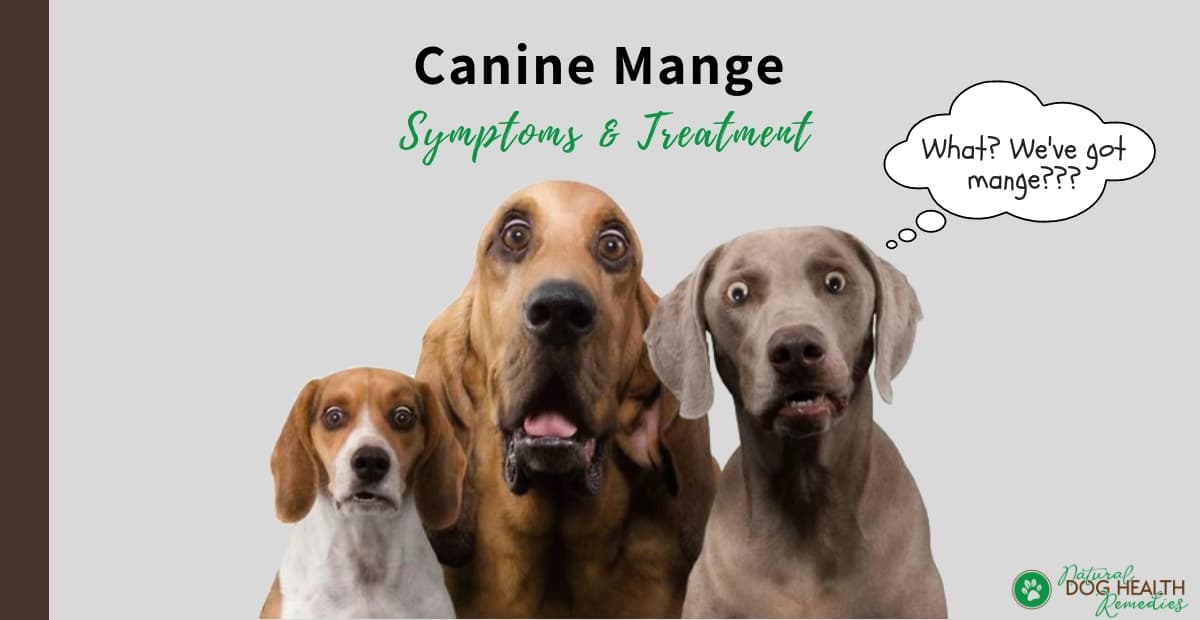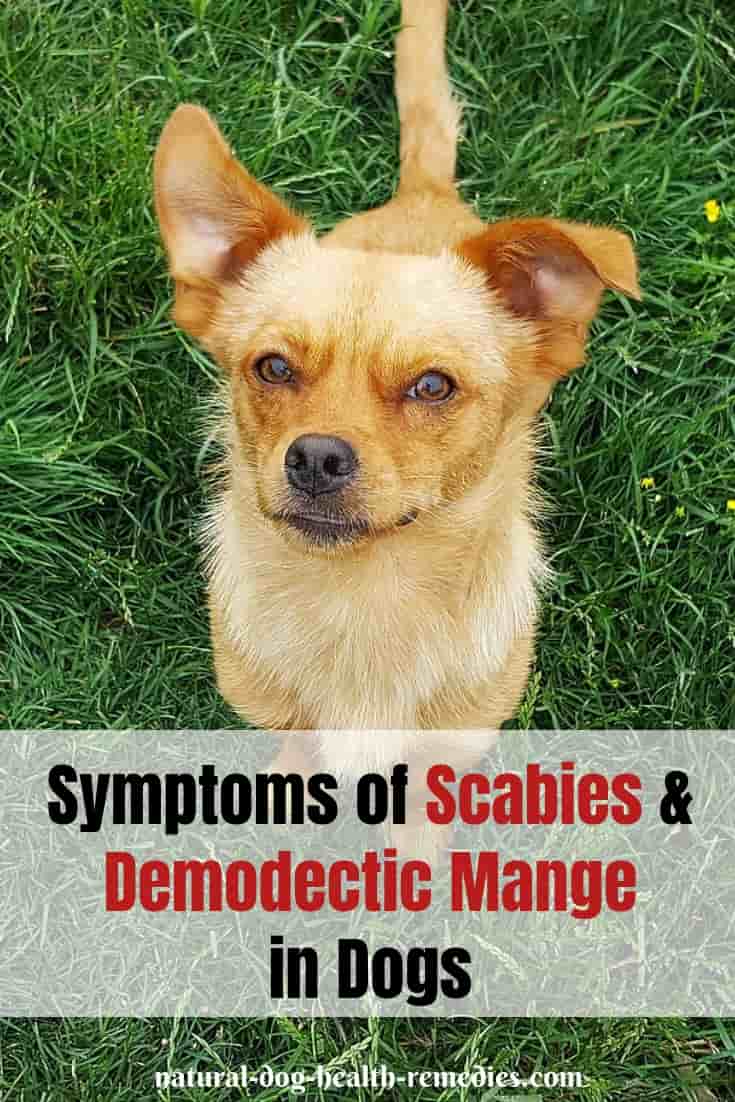Canine Mange

Overview
Mange is one of the various skin infections that causes a great deal of agonies to our dogs.
There are two main types of mange that can occur in dogs:
- Sarcoptic mange, commonly known as scabies, and
- Demodectic mange, also known as red mange, or follicle mange.
These two types of mange are caused by two different mange mites.
Let's take a look at each of these two types of mange in dogs.
Sarcoptic Mange
Sarcoptic mange (Scabies) is caused by a type of mange mites that usually infest young stray puppies.
The female mite digs "tunnels" into the dog's skin to lay its eggs. The mite continues to dig deeper while laying eggs at the same time. After that, the female mite dies off.
The eggs laid under the dog's skin hatch in 3-8 days. After hatching, the larvae feed on the skin and grow into numphs. They continue to live in those "tunnels" under the dog's skin until they become adult mites. Then, the adult mites mate and the lifecyle repeats (in 2-3 weeks).
Scabies is highly contagious among dogs and cats, and can also be transmitted to humans so caution is necessary.
These mites do best living on your dog, but can exist for several days off a host - up to three weeks in a moist, cool environment. Average lifespan for mites living off a host in a typical home is about two to six days.
Symptoms of Sarcoptic Mange in Dogs
Areas commonly affected are those where there is not much hair, and include the chest, tummy, the "armpits", and ears. Scarcoptic mange causes great discomfort to the dogs due to intense itching.
In addition, you will see other symptoms in your dog, such as:
- Crusty ear tips
- Hair loss
- Thick and scaly skin
- Crusty, reddish brown lesions due to the burrowing of the mites
- Secondary bacterial infections of the lesions
Sarcoptic Mange Treatment
Conventional treatment of scabies is by using a dip of strong petrochemicals such as Amitraz.
Unfortunately, the dipping may cause such side effects as decreased body temperature, vomiting, diarrhea, loss of appetite, or excitability.
Because of the adverse effects of strong dips, these days veterinarians opt for some flea control medications (such as Revolution and Frontline Plus) to treat mites.
Because of the highly contagious nature of scabies, infested dogs must be isolated.
Don't Forget to Clean the House
Sarcoptic mites can survive for a few days even when they are not on your dog's body. It is therefore extremely important to sweep and mop floors, vacuum carpets, and clean your dog's bedding, grooming tools, etc. to make sure that all the mites are eliminated.
Demodectic Mange
Demodectic mange is caused by another type of mites (called Demodex canis) that live in the hair follicle.
This type of mites are found normally in most dogs but since they are microscopic in size, they are not visible to the naked eye.
In small numbers, these mites do not pose a problem to dogs.
However, dogs with immature or weakened immune systems are vulnerable and more prone to develop canine mange. If your dog is strong and has a healthy immune system, she is less likely to be bothered by this mite.
Demodectic mange most usually affects puppies (less than 2 years of age) with immature immune systems and older dogs with weakened immune systems.
The mite Demodex spends its entire life on the host (the dog) and cannot live off the dog's body. As such, transmission of this mite is by direct contact only and is not considered to be contagious.
The area first affected is usually around the eyes, but may spread to the head and other parts of the body.
Symptoms of Demodectic Mange in Dogs
 Demodectic mange may affect one or two areas of the dog's body (localized infection) or it may affect the whole body (generalized infection). Most dogs suffer from localized infections.
Demodectic mange may affect one or two areas of the dog's body (localized infection) or it may affect the whole body (generalized infection). Most dogs suffer from localized infections.
One typical symptom of this type of canine mange is hair loss. Dogs with localized infection may have hair loss on the head, around the eyelids, mouth corners, and sometimes on the legs and feet.
In more serious cases of generalized infection, there may be hair loss over the entire body.
The skin may turn red and become crusty or scaly.
In case of secondary infection, the skin will become inflamed and may ooze blood or pus. The skin will also give out a strong offensive odor.
Demodectic Mange Treatment
Conventional treatment of demodectic mange in dogs depends upon the severity of the disease.
For localized infections, your vet usually prescribes a topical medicated antibacterial shampoo.
For generalized infections, more aggressive treatment is needed. The treatment may include:
- A medicated shampoo that contains benzoyl peroxide
- A dip such as Amitraz
- Antibiotics for those with secondary skin infections
If these don't work, sometimes the vet may recommend high doses of Ivermectin (Heartgard®) or Milbemycin oxime (Interceptor®). These are heartworm preventive medicines, but if given in high doses can kill off mange on dogs.
Needless to say, high doses of these drugs could have potential serious adverse effects on dogs. In particular, herding dogs (such as Border Collies, English Sheepdogs) carry a gene (MDR1) that makes them especially sensitive to drugs containing Ivermectin.
If your dog is a purebred or mixed breed herding dog and happens to have mange, be sure to tell your vet and ask for a drug that doesn't contain Ivermectin.

Natural Remedies for Canine Mange
For dogs with mild cases of mange, it is preferably to try to first treat the problem using natural remedies since these remedies do not cause serious side effects.
As is the case of most dog skin problems, canine mange is an indication that the affected dog has an immune system that is not quite up to par. Therefore, the best way to treat and prevent mange in dogs is to use natural herbs, and a healthy diet with supplements to strengthen the immune system.
Herbs and other natural remedies can also be used to tackle the localized skin problems brought on by mange mites. Be sure to visit my article on Home Remedies for Mange for more information.
Eldredge, et al. Dog Owner's Home Veterinary Handbook 4th edition (Wiley Publishing, 2007).
C.J. Puotinen, Natural Remedies for Dogs and Cats (Keats Publishing, 1999).
M. Goldstein, The Nature of Animal Healing (Ballantine Books, 2000).
R.H. Pitcairn, The Complete Guide to Natural Health for Dogs and Cats (Rodale, 2005).





